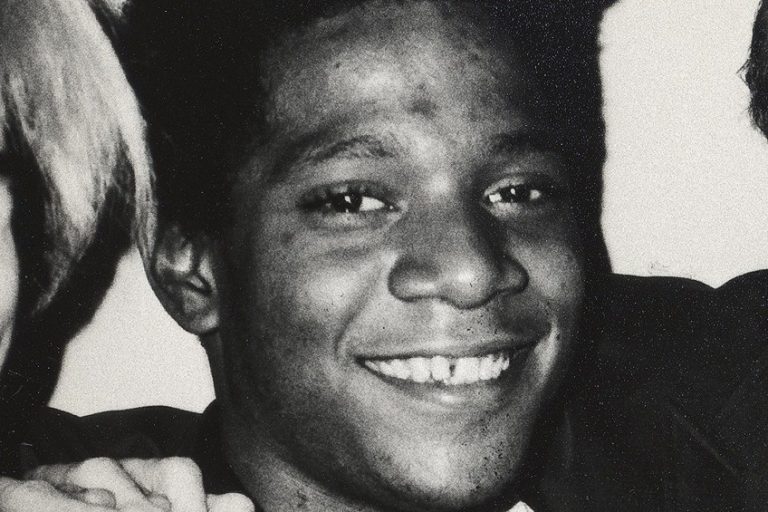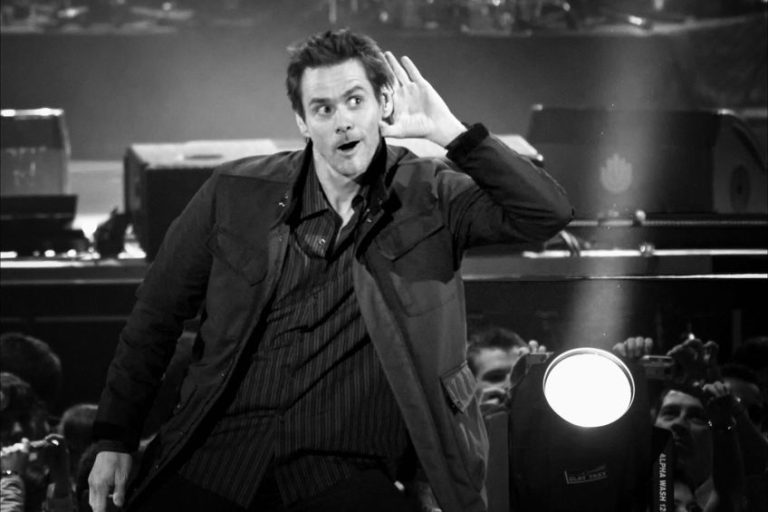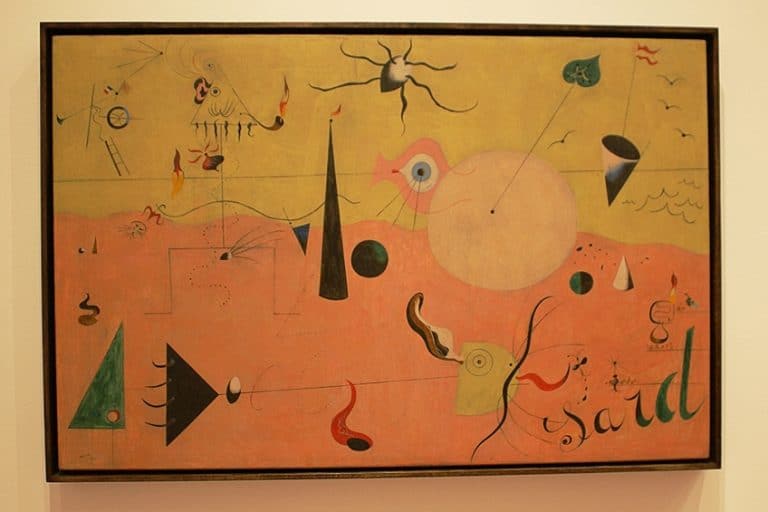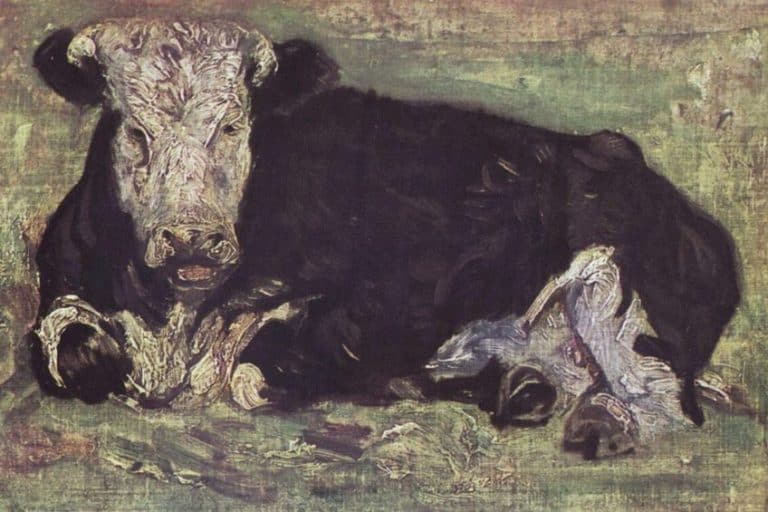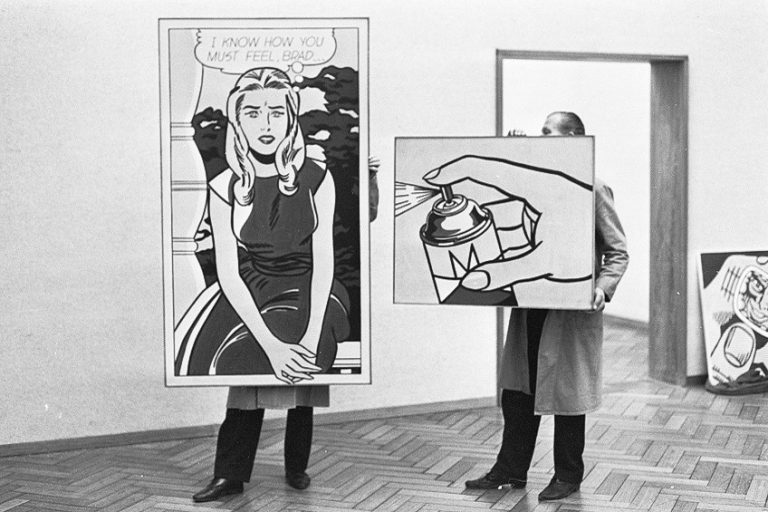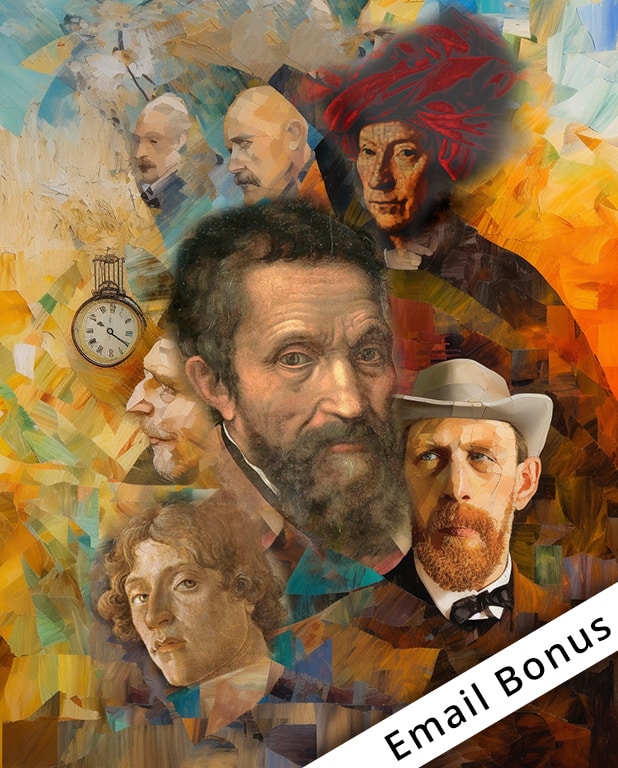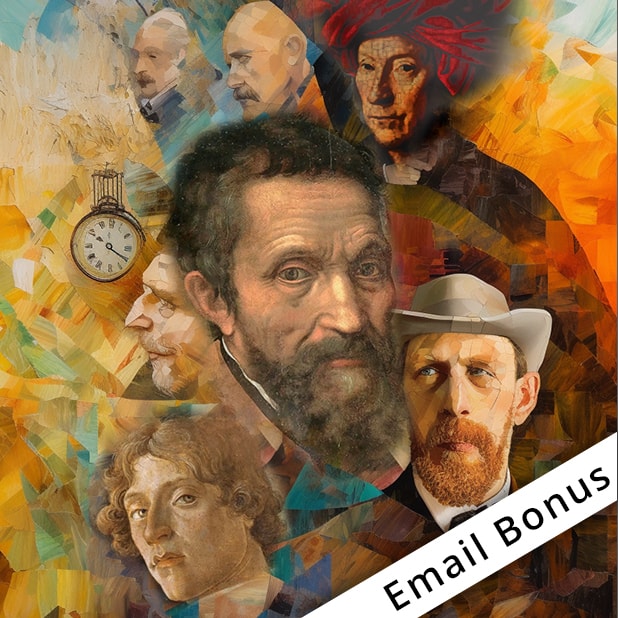“Portrait of Baldassare Castiglione” by Raphael – An Analysis
Portrait of Baldassare Castiglione, painted by the renowned Italian Renaissance artist Raphael around 1514 and 1515, is a masterpiece that epitomizes the grace and sophistication of High Renaissance portraiture. The subject, Baldassare Castiglione, was a prominent diplomat, soldier, and author, best known for his book, The Book of the Courtier, which outlined the ideal qualities of a Renaissance gentleman. Raphael’s portrayal captures Castiglione’s intellectual and noble demeanor with exceptional realism and subtlety, showcasing the artist’s masterful use of light, composition, and psychological insight. The portrait is celebrated for its refined elegance and remains one of Raphael’s most admired works, reflecting the cultural and artistic ideals of the period.
Key Takeaways
- Raphael’s portrait captures the essence of Baldassare Castiglione during the High Renaissance.
- The painting showcases Raphael’s masterful use of color and composition.
- This artwork continues to influence artists and remains a significant model of portraiture.
Historical Context and Significance
| Artist | Raphael (1483 – 1520) |
|---|---|
| Date Created | c. 1514 – 1515 |
| Medium | Oil on canvas |
| Genre | Portrait |
| Period/Movement | High Renaissance |
| Dimensions (cm) | 82 × 67 |
| Series/Versions | Single version |
| Where Is It Housed? | Louvre Museum, Paris, France |
| What It Is Worth | Not publicly auctioned; significant cultural and historical value |
Portrait of Baldassare Castiglione by Raphael is a celebrated masterpiece of the High Renaissance. Painted around 1514 and 1515, this oil painting captures the essence of Baldassare Castiglione, a diplomat, humanist, and close friend of Raphael. Considered one of the great portraits of the Renaissance, it has had a long-lasting influence on the art world. The portrait portrays Castiglione’s intellectual and noble qualities, embodying the ideal gentleman of that era.

Raphael’s masterful use of color and composition in this portrait highlights his peak artistic capabilities. The portrait, which began on a wooden panel and was later transferred to canvas, shows Castiglione dressed in modest yet elegant attire, reflecting both his status and refined taste. This painting not only showcases Raphael’s skill but also provides insight into the Renaissance ideals of beauty, intellect, and grace. The impact of Portrait of Baldassare Castiglione extends beyond its time, influencing many artists and becoming a model of portraiture.
The serene expression and thoughtful gaze of Castiglione encapsulate a sense of calm dignity, making it a timeless work of art that continues to captivate viewers today.
Cultural Impact in the Renaissance
During the Renaissance, the portrait became a symbol of the ideal Renaissance gentleman, reflecting the humanist values of the era. Baldassare Castiglione, depicted in the painting, was a diplomat and humanist from Urbino, a cultural hub in Italy. His influential book, The Courtier, published in 1528, outlined the attributes of a perfect courtier and mirrored the qualities seen in Raphael’s portrayal of him.

The elegance and refinement seen in the portrait exemplify the Renaissance ideals of beauty and intellect. Raphael’s friendship with Castiglione and his intimate understanding of Castiglione’s character helped him capture a true Renaissance man’s essence. This portrait had a lasting impact on the depiction of intellectual and noble figures throughout Europe.
Comparative Influence With Other Masterpieces
When comparing Portrait of Baldassare Castiglione to other notable works like Mona Lisa by Leonardo da Vinci or Raphael’s The School of Athens, its influence becomes evident. While Mona Lisa focuses on mysteriousness and individual emotion, Raphael’s portrait highlights clarity and composure, offering a distinct vision of personality and status during the Renaissance. Raphael’s skillful use of light and texture in Castiglione’s portrait elevates it to the same level as these iconic works. The portrait influenced many subsequent artists and remained a reference for the depiction of nobility and intellect in art.
Unlike the grand architectural setting of The School of Athens, this portrait conveys its message through the subtleties of its subject’s expression and attire.
Artistic Elements and Style
The Portrait of Baldassare Castiglione by Raphael is a masterpiece of portrait art, displaying both technical skill and deep insight into the subject’s character. This painting exemplifies the height of High Renaissance art through its use of color, composition, and symbolic elements.

Subject Matter
The portrait features Baldassare Castiglione, a notable Renaissance gentleman and humanist. Castiglione is depicted in a three-quarter profile, dressed in fine attire that includes a luxurious squirrel fur collar and a richly adorned garment. His expression is serene and thoughtful, capturing the essence of his intellectual and refined character.
Raphael’s close friendship with Castiglione adds a layer of personal insight to the portrayal, making it intimate yet dignified.

Use of Color and Form
Raphael employs a subtle yet effective use of color to highlight Castiglione’s features and attire. The muted tones of the background contrast with the subject’s clothing, notably the squirrel fur and embroidered turban. This approach accentuates the subject’s face and hands, which are rendered with detailed form and naturalistic shading.
Raphael’s mastery of light and shadow gives the portrait depth and a lifelike presence.

Composition and Technique
The painting’s composition is characterized by its balanced arrangement and harmonious proportions. Castiglione’s relaxed pose and three-quarter profile create a sense of dynamism, while the soft, diffuse lighting enhances the naturalism of the scene. Raphael’s technique is meticulous, evident in the fine detailing of the fur, fabric textures, and subtle variations in skin tones.
His brushwork is both delicate and precise, contributing to the portrait’s realistic and engaging quality.

Iconography and Symbolism
Several elements in the portrait carry symbolic meanings. The squirrel fur symbolizes luxury and status, reflecting Castiglione’s high social standing. The turban, a fashionable accessory of the time, also hints at his cosmopolitan nature and connections to the broader cultural world of the Renaissance. Castiglione’s thoughtful expression and composed demeanor embody the ideals of the humanist scholar—intelligent, reflective, and cultured.
Raphael’s understanding of these symbols enhances the depth of the portrait, making it not just a likeness but a rich, multi-layered depiction of a Renaissance gentleman.

Life and Legacy of the Artwork
The Portrait of Baldassare Castiglione by Raphael is a key example of High Renaissance portraiture. It celebrates the life and contributions of Baldassare Castiglione and remains a significant influence in art history. Baldassare Castiglione was a diplomat, humanist, and gentleman known for his role in the court of Urbino. He worked closely with Guidobaldo da Montefeltro, serving in various diplomatic missions. Castiglione authored The Book of the Courtier, which described the qualities of an ideal courtier. This work became a guide for Renaissance gentlemen. His influence extended beyond Italy, shaping the behavior and ideals of European nobility.
His relationship with Raphael was strong, beginning in Urbino. Castiglione’s diplomatic efforts and sophisticated demeanor are captured in the portrait, reflecting his status in society.
Influence of Portrait of Baldassare Castiglione Today
The Portrait of Baldassare Castiglione remains influential in art and culture. It showcases Raphael’s mastery and is praised for its realistic depiction and psychological insight. Modern artists and scholars study the portrait to understand Renaissance techniques and ideals. It stands as a benchmark for portrait artistry in Western tradition. The painting has been displayed in major museums and continues to be a point of reference in art history. Its lasting impact is seen in the continued reverence for both Raphael and Castiglione’s contributions to their fields.

Portrait of Baldassare Castiglione stands as a testament to Raphael’s exceptional talent and his ability to encapsulate the essence of his subjects with unparalleled finesse. The painting not only immortalizes Castiglione’s refined intellect and poise but also embodies the humanistic ideals of the Renaissance. Through its exquisite composition, delicate use of light, and profound psychological depth, the portrait continues to captivate audiences and art historians alike. It remains a pivotal work that highlights the harmonious blend of art and intellect, securing Raphael’s legacy as one of the greatest portraitists of all time.
Frequently Asked Questions
What Techniques Did Raphael Employ in Portrait of Baldassare Castiglione?
Raphael used oil paint, allowing for rich, detailed textures and soft transitions between light and shade. He employed a technique called sfumato to create realistic changes in skin tone and fabric. Raphael also used a controlled, refined brushwork to emphasize the elegance and sophistication of the subject.
How Does Portrait of Baldassare Castiglione Reflect Raphael’s Artistic Style?
Raphael’s use of balanced composition highlights his focus on harmony and proportion. The portrait captures a serene and thoughtful expression, showcasing Raphael’s ability to depict human emotion with subtlety. The clothing and background in the painting are rendered with simplicity and refinement, exuding the gentlemanly ideal of the High Renaissance.
What Historical Importance Does Portrait of Baldassare Castiglione Hold in Renaissance Art?
The portrait is one of the defining examples of High Renaissance portraiture. It reflects the period’s ideals of humanism, emphasizing the intelligence, virtue, and grace of its subject, Baldassare Castiglione. The work also illustrates the close friendship and mutual respect between Raphael and Castiglione, a significant figure in Renaissance society.
How Has Portrait of Baldassare Castiglione Influenced Portrait Painting in the Renaissance Era?
This painting set a standard for portraiture by focusing on the character and inner life of the subject rather than just external appearance. Raphael’s approach influenced later Renaissance artists to emphasize psychological depth in their portraits. It also demonstrated how portraiture could be used to convey broader humanistic ideals, inspiring subsequent works and shaping the genre.
Isabella studied at the University of Cape Town in South Africa and graduated with a Bachelor of Arts majoring in English Literature & Language and Psychology. Throughout her undergraduate years, she took Art History as an additional subject and absolutely loved it. Building on from her art history knowledge that began in high school, art has always been a particular area of fascination for her. From learning about artworks previously unknown to her, or sharpening her existing understanding of specific works, the ability to continue learning within this interesting sphere excites her greatly.
Her focal points of interest in art history encompass profiling specific artists and art movements, as it is these areas where she is able to really dig deep into the rich narrative of the art world. Additionally, she particularly enjoys exploring the different artistic styles of the 20th century, as well as the important impact that female artists have had on the development of art history.
Learn more about Isabella Meyer and the Art in Context Team.
Cite this Article
Isabella, Meyer, ““Portrait of Baldassare Castiglione” by Raphael – An Analysis.” Art in Context. July 4, 2024. URL: https://artincontext.org/portrait-of-baldassare-castiglione-by-raphael/
Meyer, I. (2024, 4 July). “Portrait of Baldassare Castiglione” by Raphael – An Analysis. Art in Context. https://artincontext.org/portrait-of-baldassare-castiglione-by-raphael/
Meyer, Isabella. ““Portrait of Baldassare Castiglione” by Raphael – An Analysis.” Art in Context, July 4, 2024. https://artincontext.org/portrait-of-baldassare-castiglione-by-raphael/.




